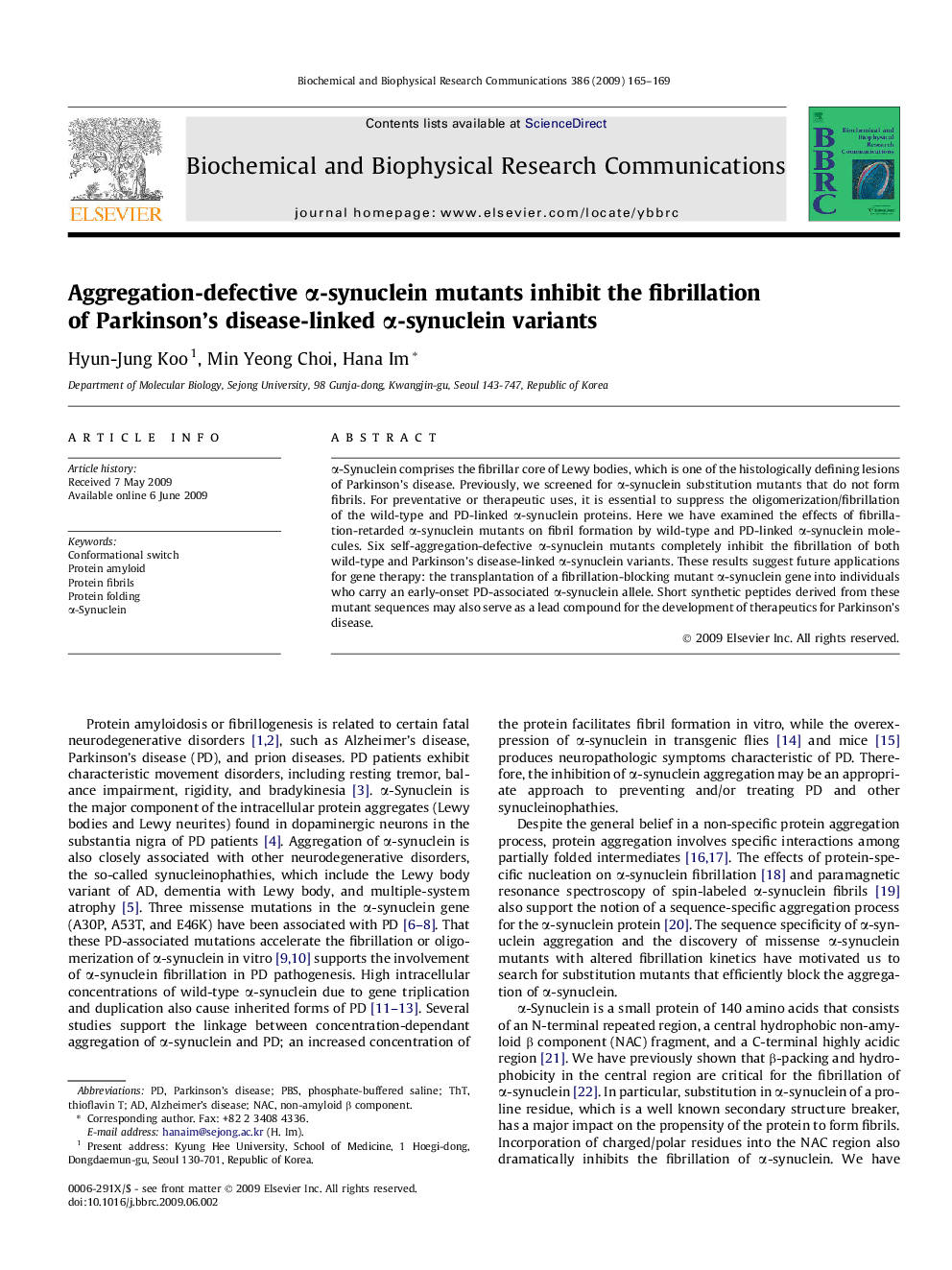| Article ID | Journal | Published Year | Pages | File Type |
|---|---|---|---|---|
| 10765647 | Biochemical and Biophysical Research Communications | 2009 | 5 Pages |
Abstract
α-Synuclein comprises the fibrillar core of Lewy bodies, which is one of the histologically defining lesions of Parkinson's disease. Previously, we screened for α-synuclein substitution mutants that do not form fibrils. For preventative or therapeutic uses, it is essential to suppress the oligomerization/fibrillation of the wild-type and PD-linked α-synuclein proteins. Here we have examined the effects of fibrillation-retarded α-synuclein mutants on fibril formation by wild-type and PD-linked α-synuclein molecules. Six self-aggregation-defective α-synuclein mutants completely inhibit the fibrillation of both wild-type and Parkinson's disease-linked α-synuclein variants. These results suggest future applications for gene therapy: the transplantation of a fibrillation-blocking mutant α-synuclein gene into individuals who carry an early-onset PD-associated α-synuclein allele. Short synthetic peptides derived from these mutant sequences may also serve as a lead compound for the development of therapeutics for Parkinson's disease.
Keywords
Related Topics
Life Sciences
Biochemistry, Genetics and Molecular Biology
Biochemistry
Authors
Hyun-Jung Koo, Min Yeong Choi, Hana Im,
